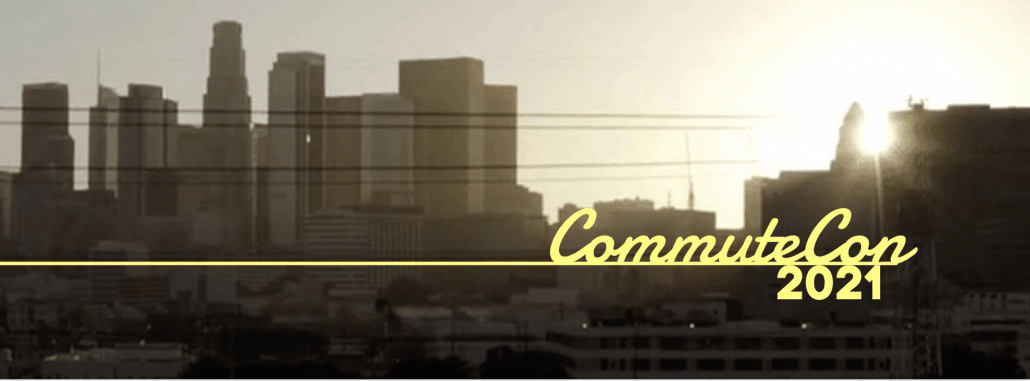Commute Management: The Missing Link in Workforce Management Strategy?
Employers have historically approached commute management and workforce management as separate business issues. However, new perspectives are emerging that challenge this paradigm. As a result, businesses are increasingly recognizing commuter support as a key element of a holistic workforce management strategy.
Let’s break this down, with an emphasis on business benefits and integration tips for organizations seeking to build stronger commuting support into their workforce management programs.
What Is Commute Management?
Commute management is the optimization of the employee commute experience for the benefit of the organization and its people. It represents the result of all employee commute programs and initiatives your business offers. These usually have multiple, overlapping objectives such as:
- Reducing traffic and congestion in and around the workplace
- Minimizing the organization’s carbon footprint
- Saving on parking and other transportation-related costs
- Improving the employee commute experience with flexible commuter support
In essence, commute management comprises all the programs and tools an organization actively uses to optimize the way employees reach the workplace.
What Is Workforce Management?
The concept of workforce management is broad in scope. It is typically the domain of managers, executives, and human resources representatives and covers the complete set of strategies a business uses to optimize the output and productivity of its team members.
Examples of major workforce management topics include:
- Budgeting and financial forecasting
- Human resources planning
- Time and attendance tracking
- Vacation and paid time off (PTO) planning
- Benefits administration
Workforce management also includes the tools organizations use to track the productivity and effectiveness of individual employees. Each organization formalizes these to greater or lesser degrees, but they function as one of the most fundamental aspects of workforce management no matter how prevalent or visible they are.
Why Have Organizations Traditionally Separated Workforce and Commute Management?
Until recently, most organizations tended to think about their commute management and workforce management programs separately. In many cases, they treated commute management as a compliance issue or an employee perk that could help people get to work. Once the were there, workforce management initiatives kicked in to make the most of employees’ time and effort once they arrive.
Businesses treated them separately mainly because commuting was viewed as something that happens away from the workplace while productivity happens within the workplace. However, a growing body of new research began to emerge in the 2010s that showed strong, previously overlooked links between commuting and productivity.
As a result, a new consensus has emerged: commuting and productivity are related and studies strongly suggest that difficult commutes have negative impacts on workplace output. The COVID-19 pandemic shone a glaring spotlight on commute-related issues, workplace productivity, and new perspectives on traditional notions of work. This accelerated the shift in organizational thinking on the issue.
Bringing the Commute into the Fold: Why Commuting Matters to Workforce Management Strategy
Managers and executives increasingly view commute management as an essential aspect of workforce management because of the profound impacts a bad commute can have on productivity and profitability. These impacts extend beyond the bottom line to areas like job satisfaction and overall personal happiness.
An oft-cited pre-pandemic statistic notes that a surprisingly high 23% of workforce participants quit a job because of a difficult commute. Observers widely believe that COVID-19 has cast an even stronger negative light on daily commuting, particularly for companies slow to adapt to growing calls for remote and flexible working arrangements.
What’s more is that a longer a team member’s commute is, the greater their risk for negative mental, physical, and emotional outcomes. Thus, organizations that employ many people who commute long-distance need to be especially cautious and comprehensive in their support planning. With the U.S. quit rate reaching an all-time high in late 2021 and early 2022, businesses that continue to overlook the impacts of commuting risk losing major talent.
The Organizational Benefits of Integrating the Commute with Workforce Management
Prioritizing commuter support within a broader workforce management strategy can yield a long list of benefits with positive effects on a business’s bottom line:
- Strong and effective commuter programs improve job satisfaction, generating organic productivity improvements
- Organizations with better commuter support tend to experience less employee turnover, which improves internal culture while reducing the high costs of filling job vacancies
- Employees with easier commutes tend to experience improvements in their mental and physical well-being, which can reduce costs related to distributing healthcare-related employee benefits
A “good commute” is also becoming an increasingly important factor for job-seekers. It continues to emerge as a major key to building a positive employee experience. The companies most responsive to shifting employee sentiments in this arena stand to avoid the worst drawbacks of a poor commuter experience while optimizing the benefits associated with more complete and empathetic commute management programs.
Integration Tips and Strategies for Organizations
Incorporating effective commute management into your overall workforce management strategy begins with rethinking the role your organization plays in employees’ commutes. It can no longer be easily separated from the workplace experience. Rather, it is a more and more essential factor in productivity, job satisfaction, and organizational wellness.
With that in mind, you can reexamine the ways in which your organization supports commuters to empower everyone to make the smartest choices for themselves and the organization.
RideAmigos Provides solutions for organizations of all sizes, each with unique needs based on commuter preferences, workplace locations, and budgets. Get started today by talking with our experts about how you can launch a commute management program that works for your employees.




